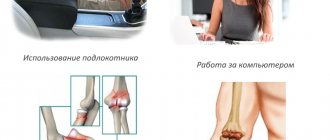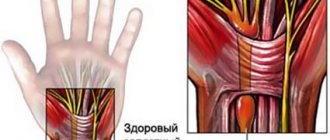What is West syndrome?
West syndrome is a cluster of symptoms characterized by epileptic/infantile spasms, abnormal brain wave patterns called hypsarrhythmia, and intellectual impairment.
The spasms that occur can range from strong involuntary contractions of the head, eyes, and torso to extension of the legs and arms. These seizures usually begin in the first months after the baby is born and sometimes resolve with treatment. They may also occur in older patients; when this occurs, they are called "epileptic spasms" rather than infantile spasms.
West syndrome most often begins in children between 4 and 8 months of age.
Muscle spasms
They are serial and symmetrical in nature, the time intervals between them are quite short and usually amount to no more than a minute. Spasms are most intense at the beginning of the attack, and decrease at the end. Spasmodic attacks are not predictable; their frequency can vary from one to several dozen per day. Their characteristic feature is a fairly tight physiological connection to the time of awakening and the time of falling asleep, when the child is between the stages of sleep and wakefulness. They can be triggered by a loud sound, a sudden unexpected movement, or even touching.
Signs and symptoms
Symptoms associated with West syndrome usually begin within the first year of life. The average age of onset of epileptic spasms is 6 months. Epileptic spasms are characterized by involuntary muscle spasms that occur due to episodes of uncontrollable electrical disturbances in the brain (seizures).
Each involuntary spasm begins suddenly and lasts only a few seconds and usually occurs in clusters that can last more than 10-20 minutes. These episodes, which usually occur upon awakening or after feeding, are characterized by sudden involuntary contractions of the head, neck and trunk and/or uncontrolled extension of the legs and/or arms . The duration, intensity, and muscle groups affected by cramps vary from infant to infant.
Infants with West syndrome also have a very abnormal electroencephalogram (EEG) with high amplitude, chaotic wave patterns (hypsarrhythmia). Most children experience regression of skills or delays in acquiring skills that require muscle coordination and voluntary movements (psychomotor retardation).
About a third of children with West syndrome may develop recurrent epileptic seizures as they age. The syndrome often develops into Lennox-Gastaut syndrome, with mixed types of epilepsy that are difficult to control and associated with mental retardation. About a third of children with West syndrome will continue to have epileptic spasms into adulthood. In the last third to quarter of patients, the seizures will resolve over time, usually those patients who have no clear etiology (cause).
Causes
A specific cause of West syndrome can be identified in approximately 70-75% of patients. Any disorder that causes brain damage may be an underlying cause of West syndrome, including:
- injuries;
- brain malformations such as hemimegalencephaly or cortical dysplasia;
- infections;
- chromosomal abnormalities such as Down syndrome;
- neurocutaneous disorders such as tuberous sclerosis complex (TSC), Sturge-Weber disease;
- various metabolic/genetic diseases such as pyridoxine deficiency, nonketotic hyperglycemia, maple syrup disease, phenylketonuria, mitochondrial encephalopathy and biotinidase deficiency, Ohtahara syndrome, and an abnormality (mutation) in the ARX or CDKL5 gene located on the X chromosome.
The most common disease causing West syndrome is tuberous sclerosis complex (TSC). TSC is an autosomal dominant genetic disorder associated with seizures, tumors of the eyes, heart and kidneys, and skin diseases. Dominant genetic disorders occur when only one copy of the “defective” gene is needed to cause a specific disease. The defective gene can be inherited from either parent or be the result of a gene mutation (change) in an affected person. The risk of passing a defective gene from an affected parent to offspring is 50% for each pregnancy. The risk is the same for men and women.
Diagnostics
The first step is to determine the patterns of brain activity by performing various tests. Among them:
- Electroencephalography (EEG): This is a painless and non-invasive way of recording the electrical activity of the brain. Electrodes are attached to the scalp to pick up and record electrical vibrations during periods of activity and, if you're lucky, during periods of sleep. If a pattern called hypsarrhythmia is noted, especially during sleep, this may help suggest that the patient is having epileptic spasms. However, there are times when a patient may have epileptic spasms but no hypsarrhythmia pattern due to the delay between clinical symptoms and EEG pattern. In addition, there are several diseases that mimic epileptic spasms, and long-term video-EEG monitoring can confirm the diagnosis of epileptic spasms. Therefore, in the case of epileptic spasms, it is preferable to perform long-term video-EEG monitoring overnight rather than a conventional 20-minute EEG study.
- Brain scans, such as: Computed tomography (CT) scan. With CT, as a result of the use of X-rays, images of sections of the brain are created on a computer, from which details of the development of the process can be learned. CT scans are also very good at showing areas of calcification, which can be important for diagnosis in some cases. However, CT does not provide as much detail as MRI.
- Magnetic resonance imaging (MRI). This radiological imaging technique creates detailed images of cross-sections or slices of the brain using the magnetic properties of specific atoms found in the brain. The images are more detailed than CT scans and can provide information about any malformations of brain structures or other types of lesions commonly seen with epileptic spasms.
Description of the disease
The disease usually manifests itself in infancy, with most manifestations occurring before the age of one year.
Diagnostic methods are based on the analysis of clinical symptoms, which are further confirmed by the results of computed tomography, magnetic resonance imaging, as well as the results of EEG (electroencephalography). Treatment is carried out using antiepileptic drugs and steroid drugs. Surgery may also be required to remove the area of the brain that is affected by the disease.
Disorders with similar symptoms
Symptoms of the following disorders may be similar to those of West syndrome. Comparisons can be useful for differential diagnosis:
Epilepsy is a group of neurological disorders characterized by abnormal electrical discharges in the brain. It is characterized by loss of consciousness, convulsions, confusion and disturbances of the autonomic nervous system. The attacks are often preceded by an aura, a feeling of restlessness, or sensory discomfort; the aura marks the onset of seizures in the brain. There are many different types of epilepsy, and the exact cause is usually unknown. West syndrome is a type of epilepsy.
Lennox-Gastaut syndrome (LGS) is a rare type of epileptic disorder that occurs in infancy or early childhood. The disorder is characterized by seizures and, in many cases, abnormal delays in the acquisition of skills that require coordination of mental and muscular activity (psychomotor delays). People with the disorder may experience several different types of seizures. Lennox-Gastaut syndrome can be caused by a number of different disorders or conditions.
Myoclonic seizures (fits) - seen in numerous types of epilepsy, ranging from myoclonic epilepsy of infancy to Dravet syndrome or myoclonic astatic epilepsy, and are often confused with infantile spasms. The seizures involve rapid jerking of the arms and legs, faster than infantile spasms of childhood, and sometimes occur individually rather than as in West syndrome, which tend to occur in clusters.
Because epileptic spasms are very subtle seizures with small short movements of the torso or arms, it is easily confused with gastroesophageal reflux and other types of non-neurological diseases.
Myoclonus is a neurological movement disorder that causes sudden, involuntary muscle contractions. There are many different types of myoclonus, including hereditary ones. Other causes include lack of oxygen, viruses, malignant neoplasms and damage to the central nervous system, as well as medications and metabolic disorders.
Symptoms
The first and most characteristic sign of this development of pathology is the constant crying of the child.
The further clinical picture of this disease is characterized as follows:
- the child lacks a grasping reflex, does not roll over, sits poorly, and has delayed psychomotor development;
- the baby does not fixate his vision on specific objects;
- tearfulness and moodiness;
- in some cases, retardation in physical development;
- attacks of spasms.
Most often, the disease begins with myoclonic spastic attacks, and a little later they transform into tonic ones.
In addition to the specific clinical picture, West syndrome also has general signs that are inherent in the underlying factor:
- breathing problems;
- nystagmus;
- cyanosis of the nasolabial triangle;
- poor appetite, lack of weight;
- poor sleep;
- lack of sucking reflex;
- impaired coordination of movements.
In general, the symptoms of this disease can be a sign of epilepsy and other etiological nature, so for an accurate diagnosis it is necessary to conduct a thorough diagnosis. Parents need to be attentive to the health of their child, and at the first symptoms they should immediately consult a doctor.
Treatment of West syndrome
Treatment may require the coordinated efforts of a team of specialists. Pediatricians, neurologists, surgeons and/or other medical specialists may need to systematically and comprehensively plan the treatment of a sick child.
In some cases, treatment with antiseizure medications may help reduce or control the various types of seizure activity associated with West syndrome. The most common medications used to treat epileptic spasms include:
- Adrenocorticotropic hormone (ACTH);
- Prednisone;
- Vigabatrin and Pyridoxine.










